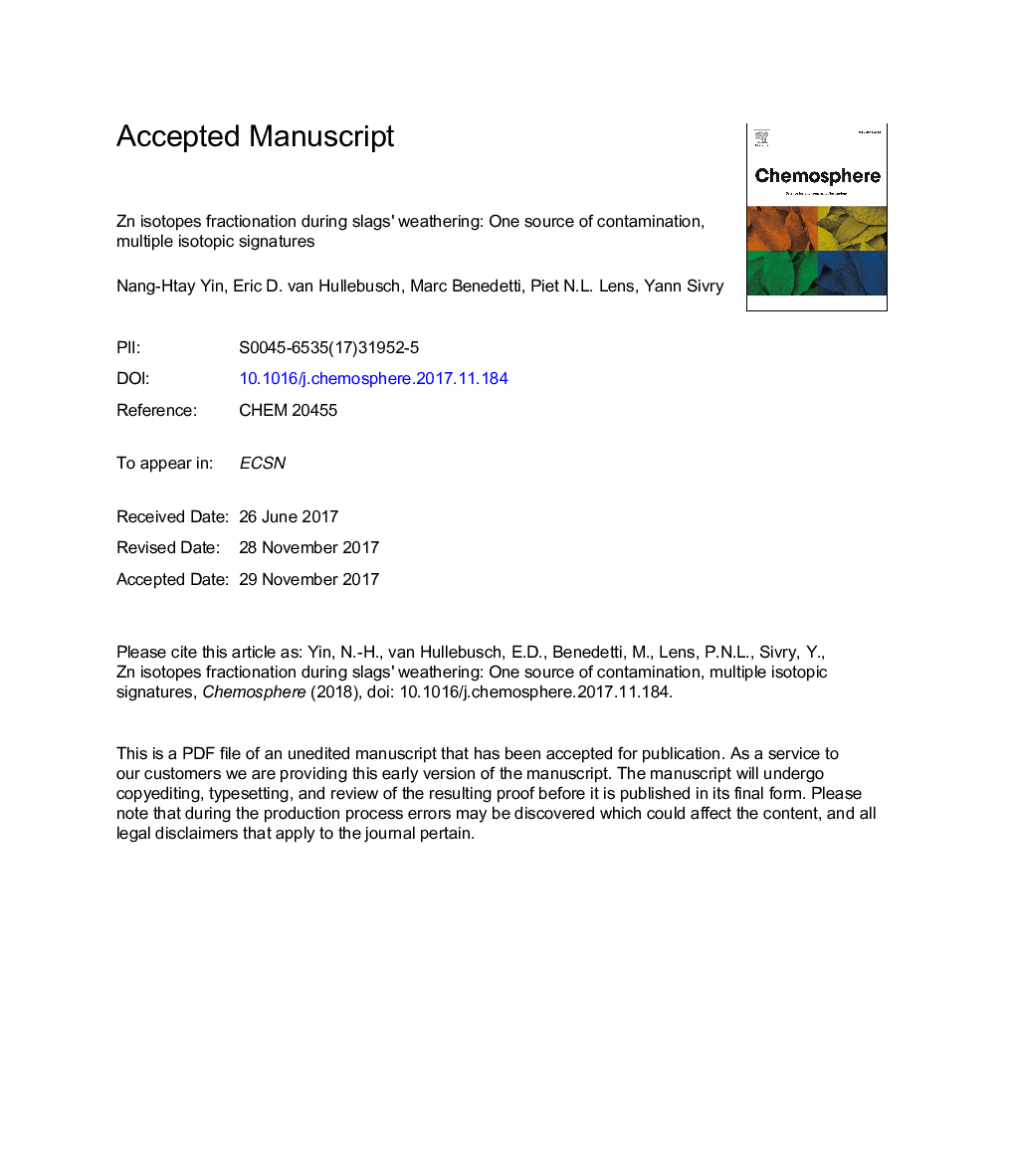| Article ID | Journal | Published Year | Pages | File Type |
|---|---|---|---|---|
| 8852235 | Chemosphere | 2018 | 29 Pages |
Abstract
During the chemical weathering of lead blast furnace (LBF) and imperial smelting furnace (ISF) slags, possible Zn isotopes fractionation was studied as a function of pH, atmosphere (open air vs nitrogen), and time. Bulk LBF and ISF displayed heavier signatures compared to Johnson Matthey Company (JMC) Zn standard solution (i.e. 0.13â¯Â±â¯0.06â° and 0.78â¯Â±â¯0.13â° for LBF and ISF, resp). The Zn signatures vary greatly by changes in solution pH; heavier signatures at low pH and lighter signature at high pH. Smithsonite (ZnCO3) formation could induce a big delta Î66ZnNitro-Open.atm of 1.13â° at pH 10 and rapid zinc hydroxide precipitation could induce Î66ZnNitro-Open.atm of 0.13-0.2â° at pH 8.5. In addition, slags contain many mineral phases: â¼80-84% of amorphous glassy phase (in v/v) and â¼16-20% of many other crystalline phases. Zn isotope signatures in primary mineral phases can be extrapolated where the signature of the amorphous glassy phase lies between â0.35â° and â0.42â°, and that of the overall crystalline phases was estimated to be 2.12â° for LBF and 5.74â° for ISF. Therefore, un-weathered slags with many mineral phases can host distinct Zn isotope signatures, which further evolve significantly during chemical weathering. One should thus carefully consider the heterogeneity of slags and the low-temperature chemical processes which lead to diverse Zn isotopic signature in the end, when using Zn isotopes as tracer of smelter's contamination.
Related Topics
Life Sciences
Environmental Science
Environmental Chemistry
Authors
Nang-Htay Yin, Eric D. van Hullebusch, Marc Benedetti, Piet N.L. Lens, Yann Sivry,
